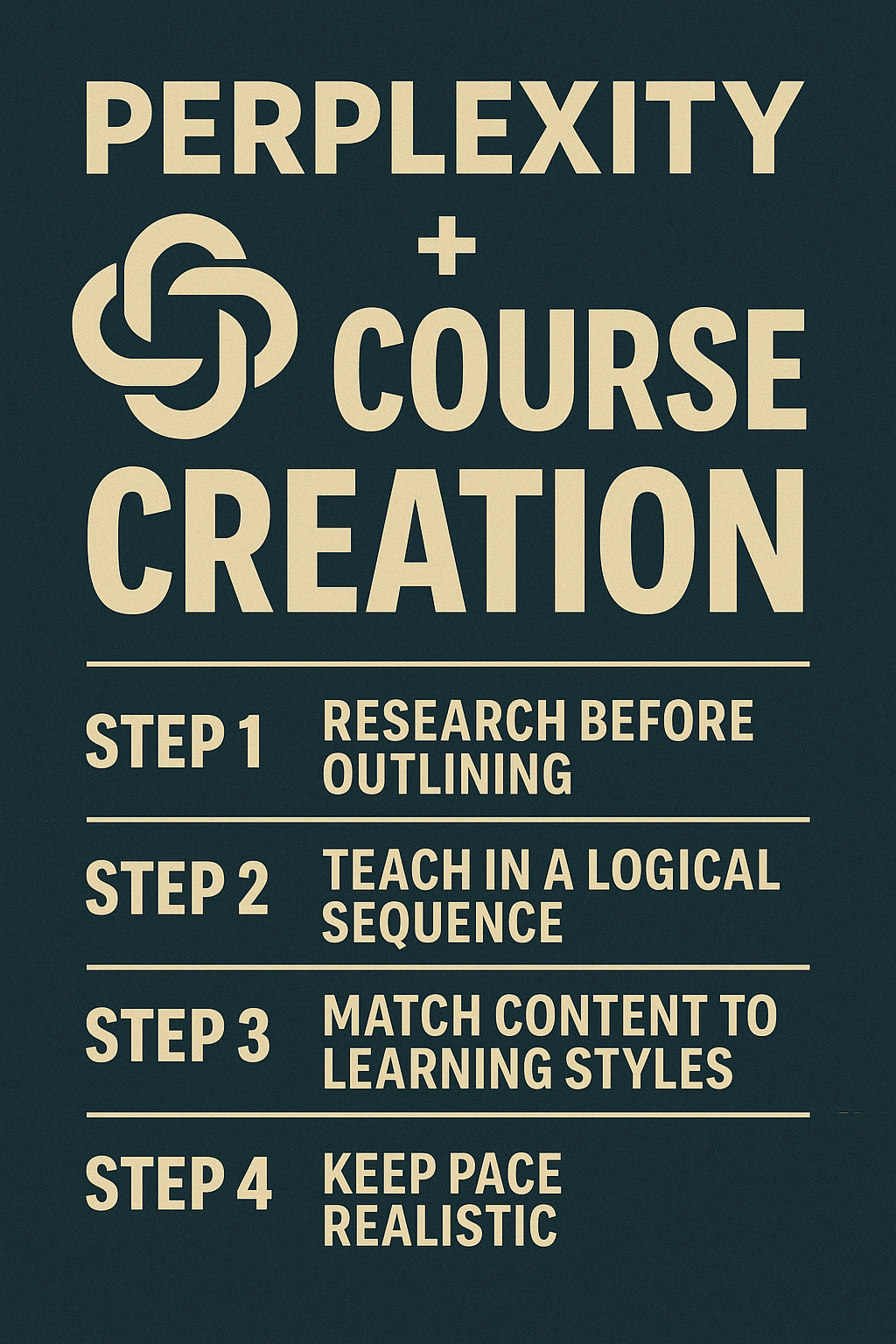Building Online Courses — How Perplexity Helps You Structure Content
Written by Fred Ferguson – GeezerWise on Substack at www.geezerwise.com #Perplexity
Knowing your subject doesn’t automatically make you a good course creator.
Most people wing it — piling information into lessons in the order it “feels right” to them — and end up with a confusing, jumpy learning experience.
The real mistake? Assuming what makes sense to you will make sense to a beginner.
How Perplexity structures your course like a pro
Perplexity takes the guesswork out of course creation by showing you what students actually need to learn, in what order, and how they learn best.
You can research:
Beginner pain points — What confuses them most, what they struggle with, and what misconceptions they have
Natural learning progression — What to teach first, what builds on what, and how to layer complexity
Prerequisites — Skills and knowledge students must have before starting
Effective teaching methods — Examples, demos, hands-on practice, or theory — and when to use each
Pacing — Lesson length, information load, and optimal practice intervals
Dropout triggers — Points where students quit and how to keep them motivated
Assessment strategies — The best ways to test and reinforce learning
Support systems — What resources, Q&A, or communities improve success
Engagement hooks — Stories, examples, and challenges that keep interest high
Desired outcomes — Skills or results students want to walk away with
Competitive gaps — What successful courses do well and what they’re missing
Actionability — Specific steps, tools, and templates for applying knowledge
Learning styles — Visual, auditory, kinesthetic, and how to blend them
Credentialing — Recognized certifications or standards that add value
Marketing fit — Titles, promises, and results that attract buyers
Pricing models — What to charge and how to structure payments
Platform preferences — Features and formats students expect
Evergreen vs. timely content — Balancing lasting value with fresh relevance
Scalability — How to grow without burning out
Supplementary materials — Resources that increase perceived value
Post-course success — Ongoing support and advanced paths that drive referrals
Step 1: Research before outlining
Base your structure on real learner needs, not your personal “best guess.”
Step 2: Teach in a logical sequence
Build step-by-step so each lesson sets up the next.
Step 3: Match content to learning styles
Use the right mix of visuals, audio, and practice.
Step 4: Keep pace realistic
Avoid info dumps — give students time to absorb and apply.
Step 5: Support and engage
Provide resources, community, and encouragement throughout.
Bottom line:
Course creation isn’t about dumping everything you know into lessons. It’s about designing from the student’s perspective — so they finish, succeed, and recommend you to others.
Perplexity helps you create courses that feel clear, motivating, and worth every minute your students spend inside.
💌 Know someone who’d appreciate this? Subscribe at GeezerWise.com to get future letters straight to your inbox.


